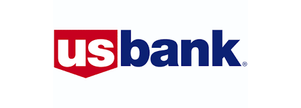Personal Finance
Our evaluations and opinions are not influenced by our advertising relationships, but we may earn a commission from our partners’ links. This content is created by TIME Stamped, under TIME’s direction and produced in accordance with TIME’s editorial guidelines and overseen by TIME’s editorial staff. Learn more about it.
Cash back credit cards allow you to earn a percentage of your card spending back each month. The U.S. Bank Cash+® Visa Signature® Card and card_name credit card sit among the best cash back cards on the market today. card_name earns bonus cash back in specific spending categories, while the U.S. Bank Cash+ card offers rotating bonus cash back categories. Both come with welcome bonus offers, intro annual percentage rate (APR) offers on purchases and balance transfers, and no annual fee.
In this side-by-side comparison, we'll look at the rewards, benefits, fees and other card details offered by both cards to help you determine the best option for you.
How the Cards Stack Up
U.S. Bank Cash+® Visa Signature® Card and card_name offer bonus cash back with no annual fee and lengthy 0% intro APR periods. See how the two cash back cards stack up when compared side-to-side.
U.S. Bank Cash+® Visa Signature® Card | ||
|---|---|---|
| Welcome offer | Earn a $200 bonus after you spend $1,000 in eligible purchases within the first 120 days of account opening. | bonus_miles_full |
| Description | 0% introductory APR for 15 months on purchases and balance transfers. After the intro period, a variable APR of 18.74% to 28.99% applies. | 0% introductory APR for 15 months on purchases and balance transfers. After the intro period, a variable APR of 19.74%–28.49% applies. |
| Annual fees | $0 | annual_fees |
| Foreign transaction fees | 3% | foreign_transaction_fee |
| Credit score needed | Good, Excellent | credit_score_needed |
Welcome bonus
The U.S. Bank Cash+® Visa Signature® Card and card_name offer nearly identical welcome bonus offers. The difference lies in the spending requirements and time frame to earn the bonus. With the card_name, you bonus_miles_full. With U.S. Bank Cash+, you earn a $200 bonus after you spend $1,000 in the first 120 days of account opening.
While the U.S. Bank Cash+ requires double the spending, it also provides an additional month to do so. Regardless, both cards feature low spending requirements that should be relatively easy to reach for most cardholders.
Welcome bonus winner: Tie
Rewards
Both credit cards earn bonus cash back in multiple spending categories. U.S. Bank Cash+ offers a unique reward structure, which allows cardholders to choose how they earn cash back:
- 5% cash back on your first $2,000 in combined eligible purchases each quarter on two categories you choose, then 1% back).
- 5% cash back on prepaid air, hotel and car reservations booked directly in the Rewards Travel Center.
- 2% cash back on one everyday category.
- 1% cash back on all other eligible purchases.
Cardholders have several 5% cash back categories to choose from, including:
- Fast food
- TV, internet and streaming
- Cell phone
- Home utilities
- Department stores
- Electronic stores
- Sporting goods stores
- Movie theaters
- Gyms & fitness centers
- Furniture stores
- Ground transportation
- Select clothing stores
You must activate Cash+ categories each quarter to earn cash back. The 2% everyday categories include grocery stores and grocery delivery, restaurants and gas stations and EV charging stations.
With U.S. Bank Cash+, you can redeem cash back for a statement credit, rewards card or direct deposit to an eligible U.S. Bank account. The minimum redemption amount is $25, and cash back rewards expire 36 months after the billing cycle in which they were earned.
card_name features more defined cash back categories:
- 5% cash back on travel purchased through Chase Ultimate Rewards.
- 3% cash back on dining at restaurants, including takeout and eligible delivery services.
- 3% cash back on drugstore purchases.
- 1.5% cash back on all other purchases.
card_name cash back rewards never expire if your account is in good standing. You can redeem cash back for a statement credit, direct deposit into an eligible linked bank account, shop with points at Amazon.com, gift cards or travel booked through Chase Ultimate Rewards. You can increase the value of your rewards by pairing Freedom Unlimited with select premium Chase travel rewards credit cards.
U.S. Bank Cash+® Visa Signature® Card has a wider range of spending categories, but card_name offers more flexible redemption options, and rewards never expire.
The better card for earning rewards comes down to your spending habits and whether you can earn enough in chosen spending categories with U.S. Bank Cash+. Both cards feature somewhat complex reward structures, especially U.S. Bank Cash+, which may require extra time and energy to track spending to maximize rewards opportunities. With the card from U.S. Bank, you must also remember to activate spending categories each quarter to earn bonus cash back. card_name earns 50% more on non-bonus spending.
Rewards winner: Tie
Annual fee
Annual fees are an added cost card issuers charge in exchange for access to a credit card and its rewards and benefits. Paying an annual fee lessens the value of a card unless you earn enough rewards to capitalize on its perks to offset the extra charge. Neither of these cards has an annual fee.
Annual fee winner: Tie
APR
The two cards come with similar intro APR offers. With card_name, you receive intro_apr_rate,intro_apr_duration from account opening on purchases and balance_transfer_intro_apr,balance_transfer_intro_duration. Once the introductory period ends, the card switches to its regular variable APR range of reg_apr,reg_apr_type.
With the U.S. Bank Cash+® Visa Signature® Card, you receive 0% intro APR for the first 15 billing cycles on purchases and balance transfers. After that, the card switches to a regular variable APR range of 18.74% to 28.99%. Balance transfers must occur within the first 60 days of account opening to be eligible for the introductory APR.
Both cards charge a fee for balance transfers. card_name has an introductory fee of either $5 or 3% of the transfer amount, whichever is greater, on transfers made within the first 60 days of account opening. After that, the fee increases to $5 or 5% of the transfer amount, whichever is greater. With U.S. Bank Cash+, cardholders pay $5 or 3% of the transfer amount, whichever is greater.
With similar intro offers and APR ranges, either card is a good option for financing purchases or paying off existing card balances over time without interest charges.
APR winner: Tie
Foreign transaction fee
If you're a frequent traveler, the last thing you want is to pay extra fees on purchases. Neither card has foreign transaction fees, making them great international travel options. Purchases made outside of the U.S. do not carry additional fees.
Foreign transaction fee winner: Tie
Other benefits
U.S. Bank Cash+ and card_name are Visa Signature cards, with access to additional benefits through Visa. The Visa Signature benefits program contains various features and perks, but it's up to the card issuer which benefits are included with a card.
The benefits included with U.S. Bank Cash+ focus primarily on exclusive experiences, discounts or customer service. The card also comes with two travel protections—roadside dispatch and travel and emergency assistance services.
card_name benefits primarily revolve around travel and purchase protections. Like the U.S. Bank card, card_name comes with travel and emergency assistance services but also includes other protections like:
- Purchase protection
- Extended warranty protection
- Trip cancellation/interruption insurance
- Auto rental collision damage waiver
Cardholders also have access to partner benefits with DoorDash, Lyft and Instacart and free credit score access through Chase Credit Journey. With the added protections, c offers more value regarding card benefits.
Other benefits winner: card_name
Which Card Earns the Most
The earning power of card_name and the U.S. Bank Cash+® Visa Signature® Card will vary depending on your spending habits. The U.S. Bank card offers more opportunities to earn 5% cash back in multiple categories, but spending is capped for each quarter. card_name only offers 5% cash back on travel purchased through Chase Ultimate Rewards, and 3% on dining and drugstore purchases, but there are no restrictions on how much you can earn. It also offers a higher cash back rate on other eligible card purchases.
The best way to know which card will earn you more cash back is to compare your current spending habits and monthly budget to the bonus cash back categories offered by each card. The answer may vary from person to person, depending on where they spend the most money.
Our recommendations
Why we recommend card_name
Chase Freedom Unlimited®
Why we like it:
card_name is a solid flat-rate earnings card with annual_fee_disclaimer annual fee. Although the 1.5% cash back doesn’t seem impressive at first glance, it becomes more valuable when combined with other rewards cards from Chase that can be redeemed for a far greater value.
This card is recommended for everyday use, whether for doctor copays or big box store purchases. It can be a large earner for cardmembers who want to get the most out of their everyday spending.
Product details:
Introductory Offer:
- Earn an extra 1.5% cash back on all purchases (up to $20,000 spent in the first year), which can add up to $300 in cash back!
- 0% Intro APR for 15 months on purchases and balance transfers, then a variable APR of 19.74% - 28.49%.
Intro Card Rewards:
- 6.5% cash back on travel booked through Chase Travel℠, our top-tier rewards program where you can redeem for cash back, travel, gift cards, and more.
- 4.5% cash back on drugstore purchases and dining at restaurants, including takeout and eligible delivery services.
- 3% cash back on all other purchases (up to $20,000 spent in the first year).
After the First Year or $20,000 Spent Card Rewards:
- 5% cash back on travel booked through Chase Travel℠.
- 3% cash back on drugstore purchases and dining at restaurants, including takeout and eligible delivery services.
- Unlimited 1.5% cash back on all other purchases.
Additional Benefits:
- No minimum to redeem for cash back. Choose a statement credit or direct deposit into most U.S. checking and savings accounts. Cash Back rewards never expire as long as your account is open!
- No annual fee – Enjoy all the great features of your Freedom Unlimited® card without paying an annual fee.
- Credit Monitoring – Keep track of your credit health with Chase Credit Journey, offering free access to your latest score, alerts, and more.
Member FDIC
- Balance transfer fee: balance_transfer_fees
- Cash advance fee: cash_advance_fee
- Foreign transaction fee: foreign_transaction_fee
card_name offers more straightforward rewards, making them easier to track. It also offers a higher base rewards rate for spending outside bonus categories. card_name offers more protections on purchases and when traveling and partner benefits with popular companies like DoorDash and Lyft.
Why you might still opt for U.S. Bank Cash+® Visa Signature® Card

U.S. Bank Cash+® Visa Signature® Card
U.S. Bank Cash+® Visa Signature® Card
The two cash back cards feature similar benefits, welcome bonus and intro APR offers, and no annual fees. Depending on your spending habits, the U.S. Bank Cash+® Visa Signature® Card may earn more cash back than card_name.
TIME Stamp: Choose a card that aligns with your spending habits
With similar intro APR and welcome bonus offers, and no annual fees, the better option comes down to which card's rewards structure aligns more closely with how you spend money. Determine your needs before considering either card.
Frequently asked questions (FAQs)
What is the minimum credit limit for card_name?
card_name comes as either a Signature or Platinum Visa based on creditworthiness. The Signature version has a minimum credit limit of $5,000, while the Platinum version has a minimum credit limit of $500.
What is the credit limit for the U.S. Bank Cash+® Visa Signature® Card?
Credit limits vary based on creditworthiness and other factors set forth by the card issuer. The minimum credit limit for the U.S. Bank Cash+® Visa Signature® Card is $300.
What is a Visa Signature Card?
A Visa Signature Card offers additional features and benefits beyond a standard Visa credit card. Card issuers decide which perks are included with a particular Visa Signature Card. Signature benefits may include car rental privileges, partner benefits with companies like Shipt and Skillshare, concierge services, access to exclusive experiences, airport lounge membership, travel and purchase protections, and cellphone protection.
The information presented here is created by TIME Stamped and overseen by TIME editorial staff. To learn more, see our About Us page.
Featured Articles

Capital One Savor Card Review 2024
The Capital One SavorOne Rewards card is ideal for those who enjoy dining, entertainment, and travel experiences. Get high cash-back rates with no annual fee.

What Is The United Miles Value And How To Maximize Your Redemptions
The value of United miles is around 1.2 cents each, although how you redeem them will have a major impact on what you actually get.

Best Secured Credit Cards for December 2024
A secured credit card can help you turn around your credit score and set you on the path to financial flexibility and freedom.

